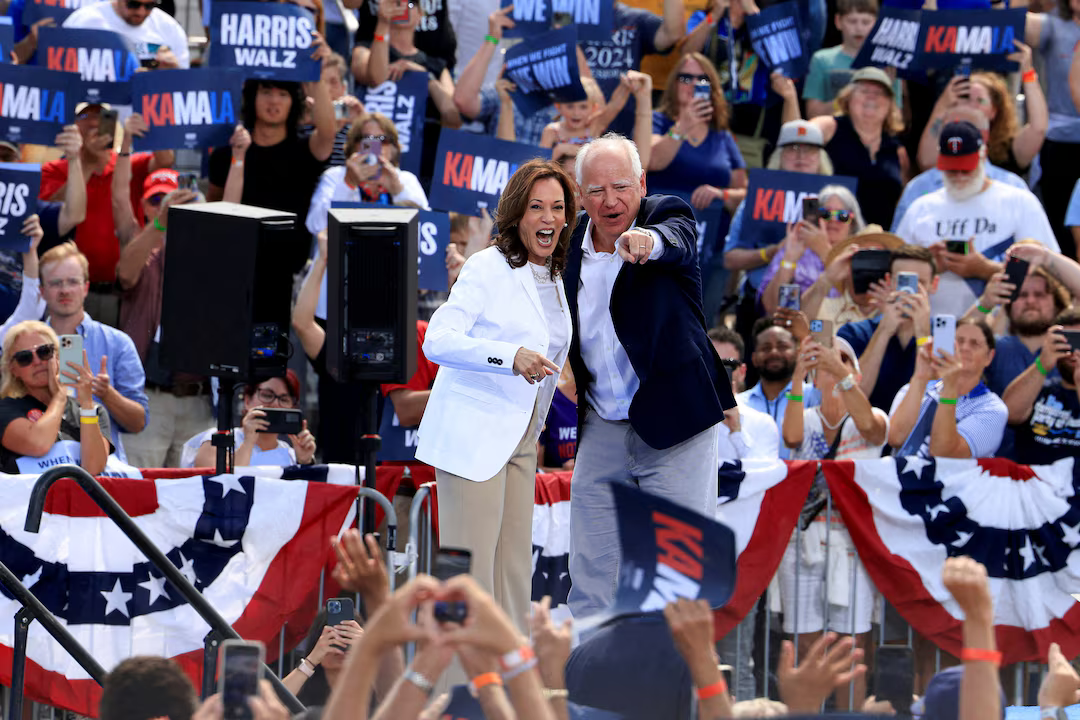BLACK RIVER FALLS, Wisconsin (Reuters) – David Mattison, a retired postal worker, had spent nearly all of his life in this remote corner of Wisconsin, watching family farms fail and small businesses go under with the hollowing out of the rural economy.
So he had approached this year’s presidential election with a sense of detachment, not yet convinced either the Democratic or Republican candidates spoke to his concerns as a voter in rural America – until Minnesota Governor Tim Walz joined the Democratic ticket as Kamala Harris’
Mattison, who has voted for Republicans and Democrats, would have been open to a more conservative candidate. But he said he did not like Republican contender Donald Trump’s divisiveness. And, while Mattison admitted he was unfamiliar with Walz’s policies, he identified with the governor’s background as a Midwesterner who was also raised in farm country.
“He’s kind of a homegrown boy,” Mattison, 68, told Reuters outside of a Walmart Supercenter in Black River Falls, Wisconsin, a city with a population of around 3,500 about 60 miles (97 km) from the Minnesota state border.
Harris campaign officials are betting Walz’s folksy style, Midwestern roots and life story as a former farmer, teacher and National Guard member, will appeal to some of the white men in rural areas who voted for Trump by huge margins in the last two elections – and help deliver the battleground states of Wisconsin, Michigan and Pennsylvania for the Democrats.
But that is a tall order, especially in the Midwestern states where the electorate skews older, whiter and more blue collar: Trump’s strongest demographic.
Reuters interviewed about 40 voters in northwest Wisconsin, one of the most closely fought areas of the state, about the candidates and their running mates, speaking to Democratic, Republican and undecided voters.
Many of those voters said they had made up their minds before Harris tapped Walz as her running mate.
But Mattison and one other independent voter said Harris’ choice of Walz has pushed them toward the Democratic ticket this year. One former Trump voter had a favorable view of Walz but wasn’t sure how he would vote. Another handful said they remained undecided.
Such incremental movements could be decisive in battleground states. Modest gains in a few segments of the electorate – such as white, working class voters – could make all the difference, said Chris Borick, a pollster and professor at Muhlenberg College in Pennsylvania.
President Joe Biden secured his 2020 election victory over Trump in part because he outperformed Hillary Clinton’s 2016 performance among white, working class voters.
Biden still lost the segment overall, Borick said, “but he was able to nudge the dial up a few points and that made a big difference.”
Still, it remains difficult for the Harris campaign to galvanize skeptical voters, even those who dislike Trump.
Kevin Dunning, 65, a Republican voter who previously owned a commercial painting company, told Reuters that he has never cast a vote for Trump and never would.
But he disliked Walz’s actions as governor during the COVID-19 pandemic, when he ordered the temporary closures of dine-in restaurants, fitness centers and other businesses.
“Walz has destroyed Minnesota,” Dunning said.
Instead, Dunning plans to write in his own name and that of his niece for president and vice president, while casting votes for candidates in other races.
The majority of states sway solidly Republican or Democrat, leaving the presidential race to be decided by a handful of battleground states that are legitimately up for grabs.
While Harris and Trump are largely tied in national opinion polls, they draw from very different demographics.
Harris significantly leads Trump among voters with college degrees, as well as Black and young voters, polls show.
Trump has an outsize advantage among white voters who didn’t go to college, leading Harris 59% to 29% in July, according to an analysis of four Reuters/Ipsos polls.










